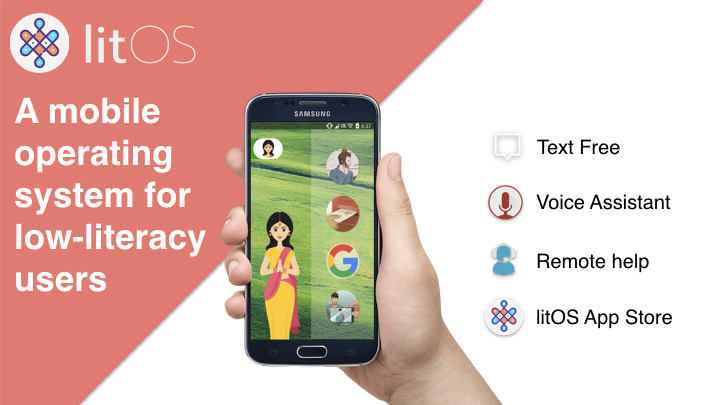What are your thoughts when someone mentions the word “extreme”? What comes to mind?
The general rule of the thumb of surviving in a society is to fall within the acceptable range, or what we would refer to as the average. When the word “extreme” is mentioned, the first thing that comes to mind for most people would be “something overt”, “not within average” and is usually associated with negativity.
Then, when it comes to designing, should one aim to design something that falls within the “normal range” to cater to most people and avoid catering to the extreme users?
Average Person Fallacy
According to an article by OpenLearn on reasons not to design for the ‘average user’, designers more often than not fall into the trap of the average person fallacy, thinking it would be a good idea to design for the average person.
The article explored of the limitations to variation and the possibility of designing for the needs of the majority by benchmarking the average person, but came to a conclusion that it would be better to design to include the extreme user (i.e. the smallest, the tallest, the weakest, etc.) because it would bring benefit to the majority users.
Why Extreme Is Not Always Bad
While the phrase designing for extreme users might not sound attractive to some, it is a great way to cater to a larger audience.
Remember the sticky keys in Microsoft Windows? The gradual ramp leading to the Service Area on the highway? Or those yellow dots covering the train station floors all over Japan and many other country?
All these three have one thing in common – they are designed for the extreme users.
According to Appligent, the purpose of sticky keys function is described as “an accessibility feature to help Windows users with physical disabilities reduce the sort of movement associated with repetitive strain injury”. While it could be used by users with physical disabilities, many other computer users utilize sticky keys on a daily basis because it makes work easier.

Image of sticky keys prompt popping up when pressing the Shift key five times
A gradual and appropriately sized ramp is designed to be used by wheelchair users to aid in their independence. But it could also be used for parents with strollers, the elderly with knee pain, even for the “average Joe” trying to take a leisurely walk up instead of climbing the stairs.

Image of the raised yellow “dots” at the train station in Japan

Image of wheelchair ramp along the highway
What about those yellow bumps and lines on the train station floors across Japan? It might sound like anuisance to the travelers, as it hurts the suitcase wheels and takes more effort for one to navigate around with a heavy bag. But these little bumps not only help the visually-challenged individuals to lead more independent lives, it serves as a “do not stand here” indication to keep other train dwellers in a safe distance.
Talking to the Extreme User
What would one benefit from talking to an extreme user?
According to Stanford University’s d.school in their Extreme Users method, the needs of extreme users are amplified, and the solution are often more significant. By talking to extreme users, one would be able to harvest meaningful insights that might otherwise not emerge during the conversation with the average user.
Extreme Innovation in India
In India, female literacy rate is at 70.3% in 2020. Out in the slums, many women are not able to read text messages or withdraw money from a bank because they are not able to handle paperwork. According to an article on The Wire, illiterate women in India would be the biggest casualty when cashless technology is rolled out.
What would be a great way to solve this problem?
As it turned out, innovation works best in the most extreme of circumstances. A group of students from Cornell Tech created litOS, a mobile operating software that help users communicate using their smartphone on the internet without writing or reading.
The student spent time talking to 20 people in India with low literacy level via video chat to understand the challenges faced and tweaked the system as they discovered new and interesting insights from the users.
The litOS comes with a voice assistant and illustrated icons for ease of handling by their target users. Remote access is also enabled on the operating system, should the user need help.

Image of litOS via Cornell Tech website
Spearheading Innovation
With the world changing at a pace faster than before, businesses are required to adapt quickly to the pace or risk taking the path once-great companies like Kodak traveled.
A multi-faceted evaluation will force businesses to consider not only the company’s profit but also to stress on other points such as being in line with the Sustainable Development Goals (SDGs), creating a psychologically safe environment for innovation to happen, focusing on the importance of mental health, and more.
Innovation requires people to challenge the status quo to discover something new or original. Failures often happen when companies succumb to the pressure of conservativeness and the lack of support from the leaders.
Creating a culture of innovation requires strong, fearless leadership. This is where creative leadership will play a huge role in spearheading innovation during the times of uncertainty.
THNK.org defines creative leadership as “the ability to create and realize innovative solutions especially in the face of structurally complex or changing situations. It refers to those people who, when all is shifting and new approaches are yet unknown, can still create clarity of purpose for their teams.”
Are business leaders ready to embrace creative leadership to navigate their organization into the next phase?
What’s Next?
There are many examples of designs for extreme users happening around the world. People are increasingly trying to interview not just super fans of their brands but also their super rejecters and haters to gain meaningful insights to the needs of the users. This helps to increase the speed of receiving interesting information, and could potentially uncover insights or data that the competition has yet to see.
What will you do to help the extreme users?
Main image by Jonas Verstuyft via Unsplash










